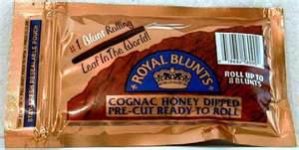6/14/99
Here's something interesting we tried in 1991:
At an event we had 16 cues with the butt, joint and the ferrules covered with masking tape...then numbered. No one could "see" if the cue was a steel, plastic or wood joint (as in a Pete), nor detect by the style of ferrule.
We had 70 players...each hit balls with the cues throughout the weekend. The results: Of nearly 800 attempts over the time period, the players guessed wrong about what type joint was in the cue more than 7 out of 10 times.
A top pro (Meucci staffer) happened to be there, having done an exhibition and the cue he liked the most during the attempts: He thought was surely a Meucci, plastic joint when in reality it was an older Adams with a piloted steel joint; and additionally guessed the Meucci he shot with as a
cue with a steel joint.
Again, I maintain that cues with different joint materials may sound differently; may be balanced differently, but what is "hit" ? Doesn't "hit" have to do with all the senses: Vibration (feel), sound, balance, etc. What is a "soft" hit? What is a "hard" hit? (what does this mean, if not
the sound the cue makes upon impact, or are people ref. to the vibration in the butt?) Does a hard hit vibrate more and make a different sound? A soft hit vibrate less with a different sound?
I maintain that the primary criteria that differentiates one cue from another begins with:
>The tip (soft, med or hard)
>The shaft diameter and density of the wood
>The taper (or stiffness of the shaft)
To this day, I still don't believe the joint has much to do with the reaction of the cueball off the shaft, rather it is the 3 aforementioned that have far more bearing on how a cue plays than anything else. Remember, what makes the predator shaft play differently is what is located at the tip,
inside the shaft, the ferrule and the laminations....not the joint or butt.
In closing, our experiment asked which cue the players liked best: Of the 70 players, nearly 55 liked the hit of two cues with different numbers:
When the two were exposed, they both were sneaky petes, wood to wood joints, (one a Scruggs and the other a Huebler); both about 19 oz., both about 13 1/4mm and tended to be on the stiff side of "hit". By the way, the 55 who liked the hit of these two cues: more than half thought they would be steel jointed.
John McChesney


